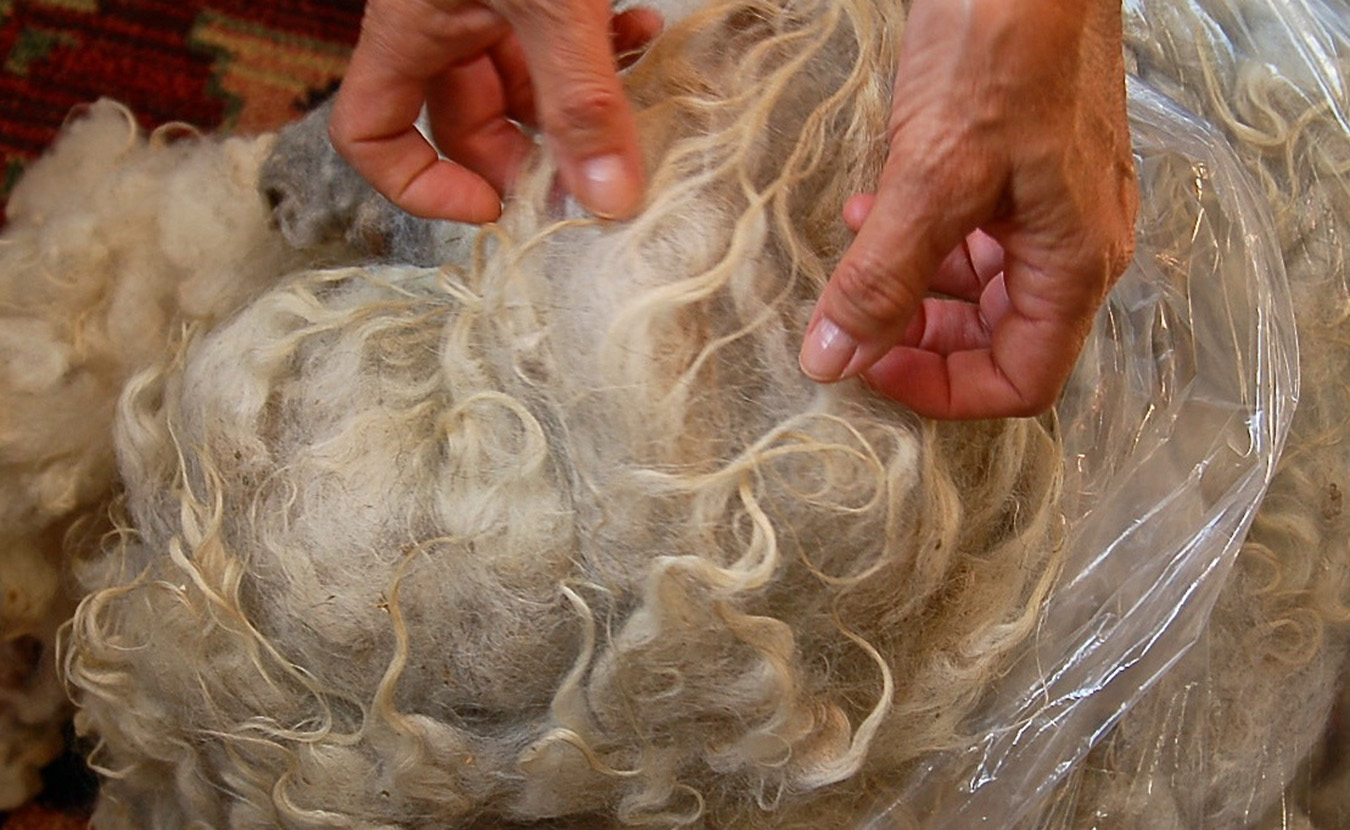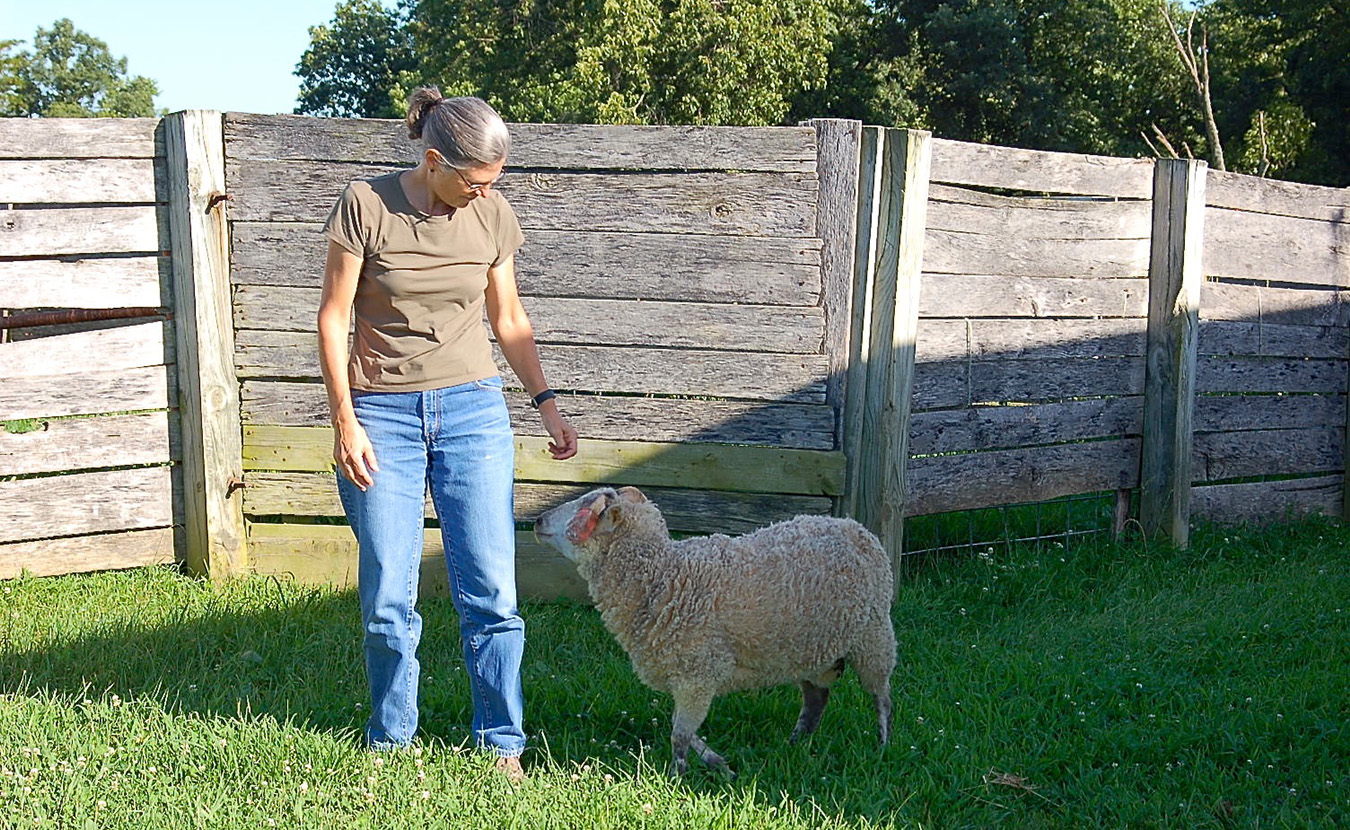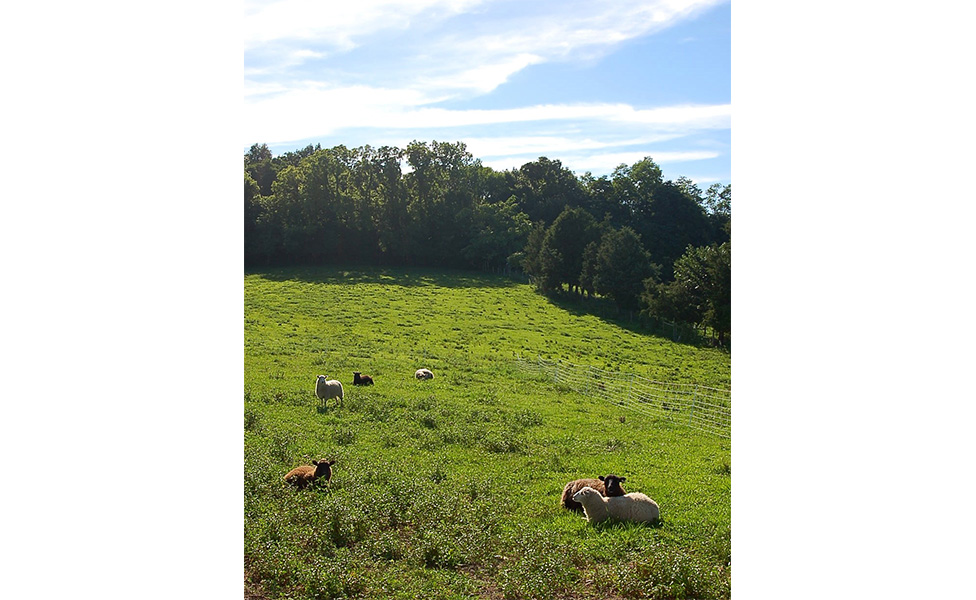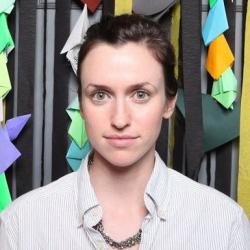Knitting, weaving, crocheting: For many, these words evoke memories of mothers and grandmothers making baby blankets and winter mitts. That demographic remains dedicated, but fiber crafts have seen a resurgence in the past decade among a new generation invested in local economies and DIY culture. These days, self-described “fiber enthusiasts” are interested in more than pattern, color, and practicality — they care about the source of their yarn in the same way some people care about the source of their heirloom tomatoes.
To trace yarn’s journey from source to skein, I took myself to Marble Hill Farm, an idyllic plot of rolling pastures about 10 miles south of Bloomington. Kip and Whitney Schlegel bought the property in 1994. Whitney, a biology professor at Indiana University, was excited to get her hands dirty with science and agriculture outside the classroom. Since the beginning, the farm’s mainstay has been its cattle — Marble Hill was the first meat vendor at the Bloomington Community Farmers’ Market, first selling beef there in 1999. Over the years, they have also sold goat cheese, eggs, fresh produce, and herbs. In June of 2012, after much thought and research, Whitney acquired four Shetland sheep from Under The Son Farm in Greencastle and embarked on a new phase: fiber farming.
On a recent hot but peaceful Sunday, Kip and Whitney took me around Marble Hill to meet the members of their menagerie. There was a golden horse named Luke, a stabled brown one named Rocky, and a herd of black cattle angling for shade in a grove of trees. There was a honking goose named Gallie, a herd of lounging goats, and a pair of miniature donkeys, Pico and Poco, who serve no agricultural purpose but certainly add to the place’s charm.
Charming as it all was, meeting and petting so many cuddly characters, I was eager to get to what I considered the main attraction: Whitney’s flock of Shetlands.
The gals and their lambs were nestled in a shady barn, looking comfy and content with their cushions of hay on the floor and signs hanging above with their names hand-painted on them. In keeping with Shetland tradition, the Schlegels name their sheep according to a theme. For that first bunch, they chose nuts, so these founding mothers are named Peanut, Cashew, Hazel, and Piñon. Each ensuing lamb crop gets a new theme: the first lambs became fruits (Persimmon, Clementine, etc.) and the second set of lambs, the most recent, became herbs (Rosemary, Sage, etc.). This system of naming is practical — it helps farmers keep track of their sheep, especially as flocks grow — and it is also, it must be said, completely adorable.

When not out in the pasture, Whitney and Kip’s ewes hang out in the sheep barn, beneath name cards that group the founding mothers — Hazel, Peanut, Cashew, and Piñon — with their fruit- and herb-named offspring. | Photo by Lindsay Welsch Sveen
It’s easy to forget, when deciding which sweater to slip into on a chilly winter morning or even which yarn to choose at the craft store, that the substance that makes up so much of our knitwear comes from an animal. But Whitney doesn’t forget it for a second; her attentiveness to every stage of the process, from sheep to fleece to roving to yarn, brings that connection to the fore on a daily basis. The sheep barn is Whitney’s domain on Marble Hill Farm, and she tends her flock closely, keeping their coats as free of debris as she can all year long so that, come shearing day each April, she’ll have fleeces with a minimal amount of hay and other organic matter tangled in.
It is hard work, for sure, but it is also a passion. As an educator, Whitney feels strongly about moving beyond facts to actually connect with material in meaningful contexts. The Schlegels put this into practice by partnering with Girls Inc. and WonderLab to bring kids out to the farm to touch the grass, meet the animals, and work with the wool. For most campers, this is a whole new approach to scientific “data”; they gather information with their hands, eyes, ears, and noses in a living environment far away from any classroom.
“In absolutely everything we do on the farm,” Whitney says, “there is creativity.” She hopes that by experimenting with wool and other materials at the farm the kids develop a more creative relationship to science. Working with wool at various stages — shearing, scalding, skirting, combing, spinning, dyeing, felting — melds the hard and soft (oh, so soft!) aspects of science.

Whitney combs the fleece with sharp mettle tines to sift out debris and align the strands of fiber in a single direction. She then pulls the “combed top” through a small hole to create roving, which can then be spun into yarn. | Photo by Lindsay Welsch Sveen
As I sat on the sheep barn’s new deck, hearing about the camp curriculum and the malleability of young makers, I envied the campers getting an early, hands-on education in all things fiber-related. Luckily, though, some of us adults will soon be able to get a taste of that hands-on experience when Whitney launches her first fiber CSA (Community Supported Agriculture). Each CSA share will include a bundle of Whitney’s fibers — undyed roving (unspun strands of fiber) — this fall, then a mixture of naturally dyed roving and yarn in the spring. Members will also be invited to activities on the farm, like drop-spindle and felting workshops as well as fiber-fun nights for crafting and socializing on the sheep deck. The Schlegels eventually want to formalize their commitment to teaching by conducting hands-on experiments and interpretive demonstrations at a nonprofit education center they plan to build right on the farm.
At the end of my visit, as I turned the corner to leave the property, a great white beast suddenly emerged from an overgrown hedge: a Great Pyrenees named Stanley. He stood and watched me go, silently reminding me that there are still more animals — and more experiments — to discover at Marble Hill Farm. I’ll be back soon to find out.




